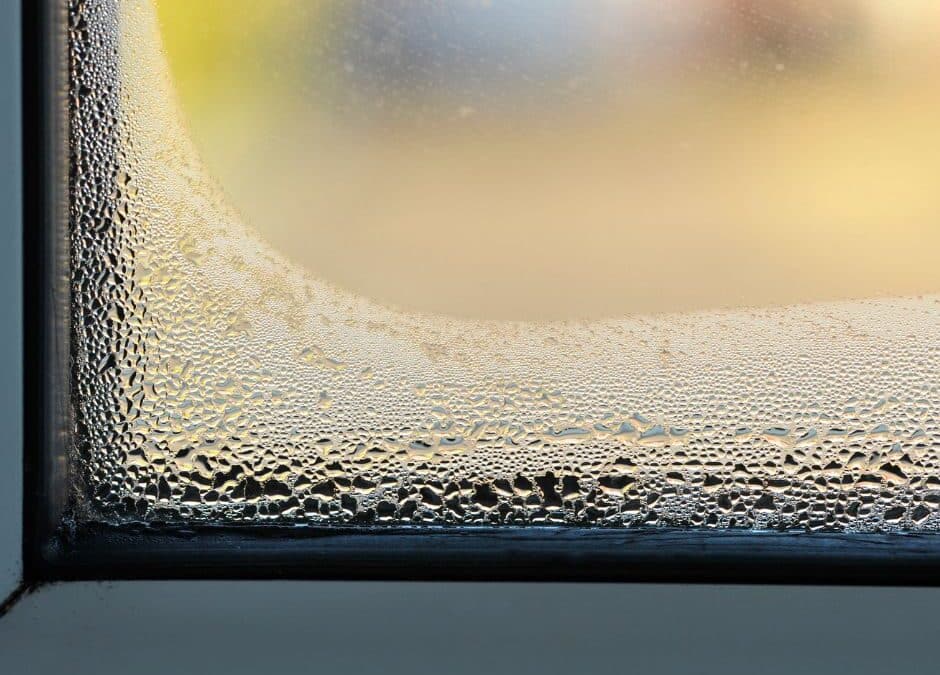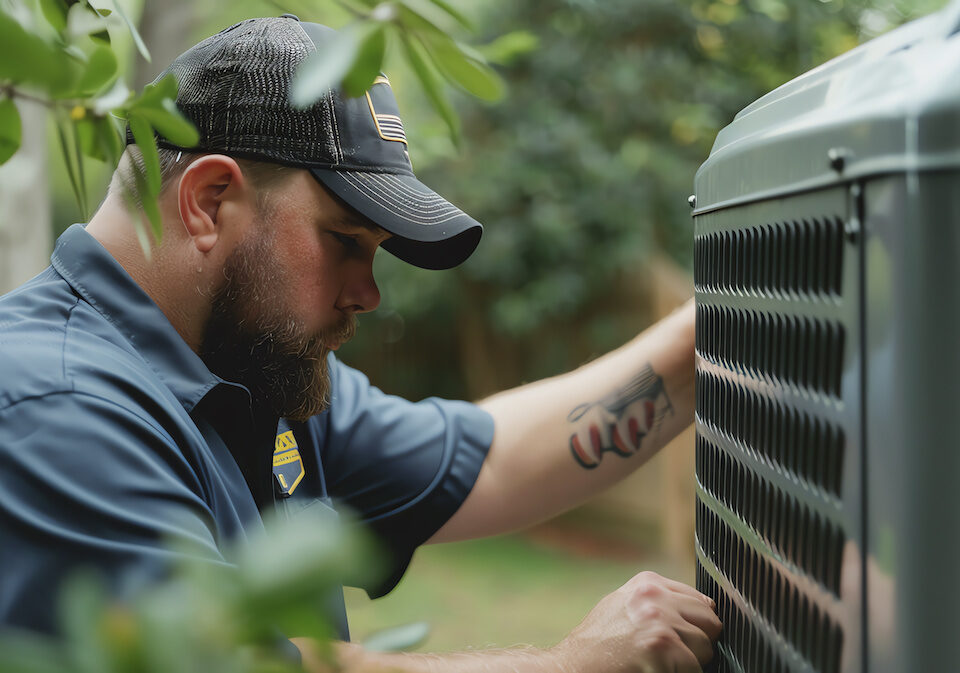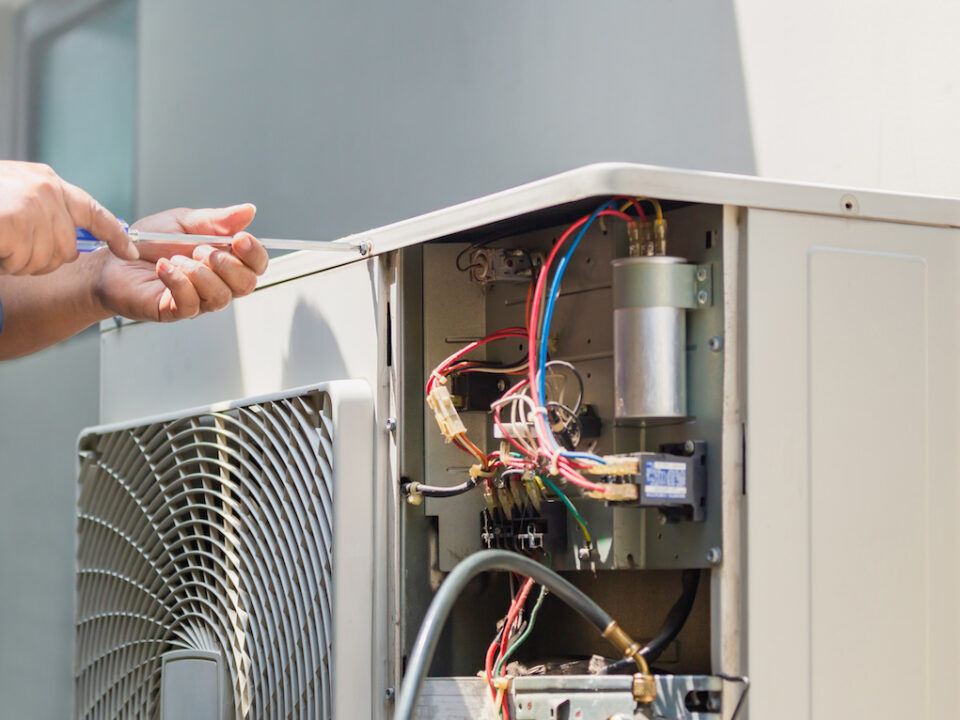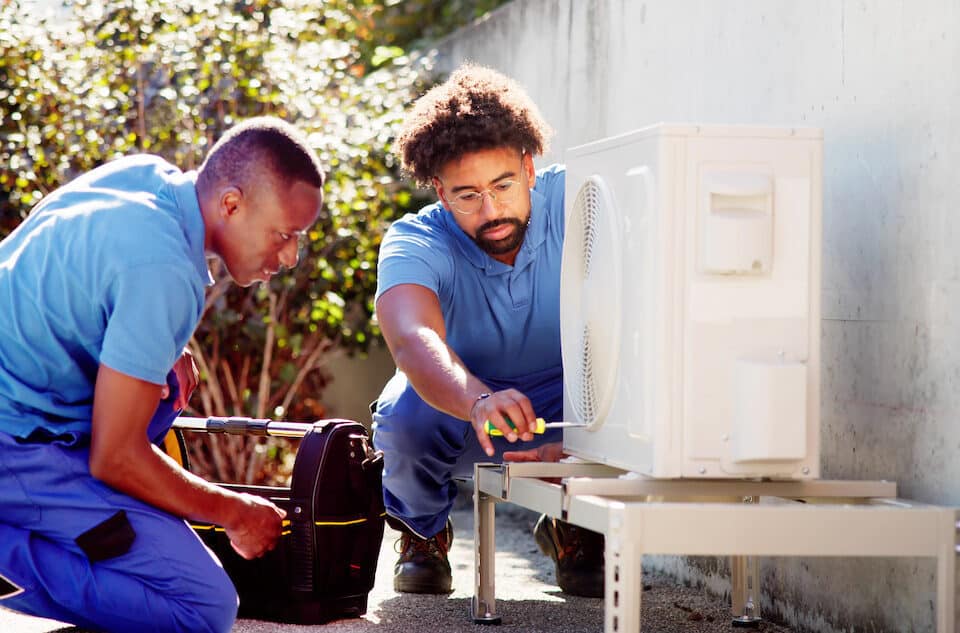How to Stop Condensation on AC Ducts

Condensation and sweating are common issues when it comes to air conditioner ducts. This moisture buildup typically occurs when water drops collect outside of the AC ducts and vent openings. In addition, condensation also forms when water pools on the ground around the unit in extreme cases. Clearly, when condensation becomes a long-term problem, it leads to various issues with your AC unit. Trust Heating & Air has a few valuable tips for stopping condensation on AC ducts. Read along to learn how to avoid this potentially costly problem.
What Creates Condensation in Air Ducts?
Before you learn how to stop condensation, discover the causes of the moisture layer. Then you will be able to fix the issue and restore optimal conditions to your AC and home.
Poor Insulation
The main reason for the condensation on AC ducts is a temperature difference between the cool air inside your home and the warmer air outside. Having adequate insulation can reduce this issue, creating a barrier around the ductwork and keeping the warmer air away.
Now, you may already have insulation around your ducts. In that case, additional insulation layers may be needed, or they may have worn out over time. When your insulation is worn out, it can have tears that make the condensation a bigger issue. You sure do not want that.
There are different types of water-absorbent insulation that will soak up the excess moisture and make it less effective. Ask your local AC repair professional to take a look or call us at TRUST for help.
Mechanical Problems
If you see that your AC ducts are sweating more than ever, check around your unit and perform a DIY general inspection to locate any technical issues. You’ll want to look for foul smells, strange noises leaking ducks, weak airflow, and more. These issues may lead to your unit not functioning correctly, further leading to condensation building up on the ductwork.
In the case of mechanical issues, we suggest you let trained and qualified technicians handle the job.
Blocked Ducts and Dirty Air Filters
Seeing your air ducts sweat can indicate that the circulation in your ductwork isn’t efficient. Several things can lead to these blockages.
- There could be excessive dust blocking your ductwork.
- Your AC filter could be overly dirty.
- Or the MERV rating on the filter you’re using could be too high.
To ensure you have proper airflow, replace your air filters at least every three months. Even if you don’t see condensation on your air ducts, replacing your filter is essential for airflow and the health of your home.
A Warm Attic
If you experience high temperatures daily in your hometown, that could be the reason why your ductwork is sweating. Did you know that your attic can reach up to 150 degrees on hot days? This temperature is a lot higher than the recommended 110-degree mark. Since heat rises, it can get trapped in the attic, causing heat buildup. Expect your attic to be 20 degrees higher than the current temperature outside.
Why is this heat a problem? Besides the potential melting plastic items stored there, the warm air in the attic can cause excessive condensation to accumulate in your AC ducts. To help manage this better, make sure your attic is adequately insulated. Proper insulation will also help regulate the temperature in the attic and keep your house cooler on those hot summer days.

Why Avoid Condensation on AC Ducts?
If you have seen the condensation but never considered it an issue, here is why we recommend calling for an AC ductwork inspection.
Condensation Causes Mold and Mildew to Flourish
Mold and mildew grow best in warm and moist places. Excessive moisture levels indoors caused by condensation on your AC ducts provide the mold and mildew with optimal growth conditions.
- Mold will damage the structural material of your home because it eats at everything it grows on.
- Mold spores harm your indoor air quality and flare up allergies in those living in the house.
- The damage can spread to furniture and the wood in your home.
- Mold remediation can be quite costly, depending on the extent of the damage.
Contact a professional immediately after spotting the first sign of mold in your air ducts.
It Leads to High Indoor Humidity
High humidity in your home can cause problems with your body and the materials in your house. Sweating from ductwork adds moisture to the indoor air causing the following unfavorable conditions.
- High humidity in the interior of the home is uncomfortable.
- Humidity inside causes damage to your wallpaper photographs, paintings, wood floors, and wood furniture.
- There are foul odors that come with high levels of humidity.
- Fixing all the damage from high humidity can be very expensive.
So, you can clearly see why you do not want high humidity in your home.
Condensation Causes Damage to Insulation
AC condensation will eventually begin to drip down your home’s insulation. When the water droplets fall, they compress the insulation. That compression can ultimately affect the insulation R-value, making it less efficient with time.
Additionally, when proper insulation is needed, you’ll be looking at a high energy cost. No one wants higher energy bills!
Not to mention, sweating near your insulation causes the materials to become wet and heavy. We have seen this condition lead to ceiling leaks that sometimes cause ceiling collapse.
Avoid Structural Damage Due to Water
As you may have already noticed, water and wood don’t go well together. According to the National Association of Home Builders, around 90% of houses built in 2019 are wood-framed. Because of this construction, condensation on your AC ducts eventually makes its way into the structure of your home. Not only will this make your house lose its thermal capacity, but it will also compromise your home’s structure. It may result in corrosion, decay, and more.
How To Stop Condensation on AC Ducts
Did you know it is essential to keep condensation on your AC ducts to a minimum? Maybe you have never noticed the moisture on your AC. Perhaps you have seen the condensation but never considered it an issue. Well, that is precisely why we are presenting this helpful article on how to stop the buildup of condensation on your AC ducts.
First- Lower the Humidity Levels
The first thing you want to start with is interrupting the cycle that’s causing the condensation and the rise of humidity levels. This might be challenging to do if you already live somewhere with a humid climate; it can seem like an uphill battle. Still, you can definitely reduce the amount of humidity by purchasing moisture-absorption products to place in your home.
One home product we highly recommend is a dehumidifier. Just like its name, this machine is made to remove excess moisture from the air. Make sure you check the dehumidifier reservoir from time to time and empty the water that has been collected. That way, it won’t overflow.
Second- Schedule Ductwork Maintenance
Every three to five years, you should schedule a professional to come out to your home or business to clean your air ducts and eliminate dust and debris. Keeping up with the maintenance will improve your airflow, improve your home’s indoor air quality, and reduce moisture buildup.

Third- Insulate Metal Ductwork
If your home has ducts that are getting older, adding new insulation can reduce the amount of condensation from forming. If you feel comfortable and you have the right tools installing insulation is a simple and affordable job. Here is our top tip to help with the installation process.
Since you’ll be handling fiberglass insulation, remember to wear protective gear such as gloves, a mask, goggles, and clothing that covers your body completely.
Adding insulation to your ductwork is inexpensive; most supplies cost around $300. That cost is recovered in the money you spend each month on energy and costly repairs to an excessively moist system.
Fourth- Upgrade The Attic
When you have a warm attic and high humidity around your home, there’s really no preventing some form of condensation issue. TRUST recommends updating your attic insulation to improve your attic ventilation.
Doing so can help prevent condensation from accumulating in the air ducts. When choosing new insulation, be sure you choose the right one with a high R-value. The higher the R-value, the better it keeps outside air from impacting your attic.
You may have never noticed most new homes have installed attic vents. But if you have an older house or your current vents are not doing the job correctly, adding a new attic vent is a great idea. The newly installed vent will lower the moisture and keep your air ducts significantly drier.
Not up to the DIY job? That is alright. TRUST Heating and Air can help!
Fifth- Wrap Ductwork
Another way to prevent condensation from your AC ducts is to wrap your ductwork. Duct wrap is made of foam insulation on the inner layer and foil on the outer layer. Neatly wrap the material around the AC duct and secure it with duct tape near the joints, or call the pros at TRUST to take care of it for you.
TRUST Heating & Air Can Put a Stop to AC Condensation
TRUST Heating & Air knows the importance of having a dependable repair company. Rest assured, TRUST only installs the best products and always has a plan for the future. Furthermore, our technicians take pride in working for a company that employs good, honest people. We have only the highest quality standard of technicians and servicemen. With almost ten years of experience, they strive to be the best for you, your air quality, and the community.



